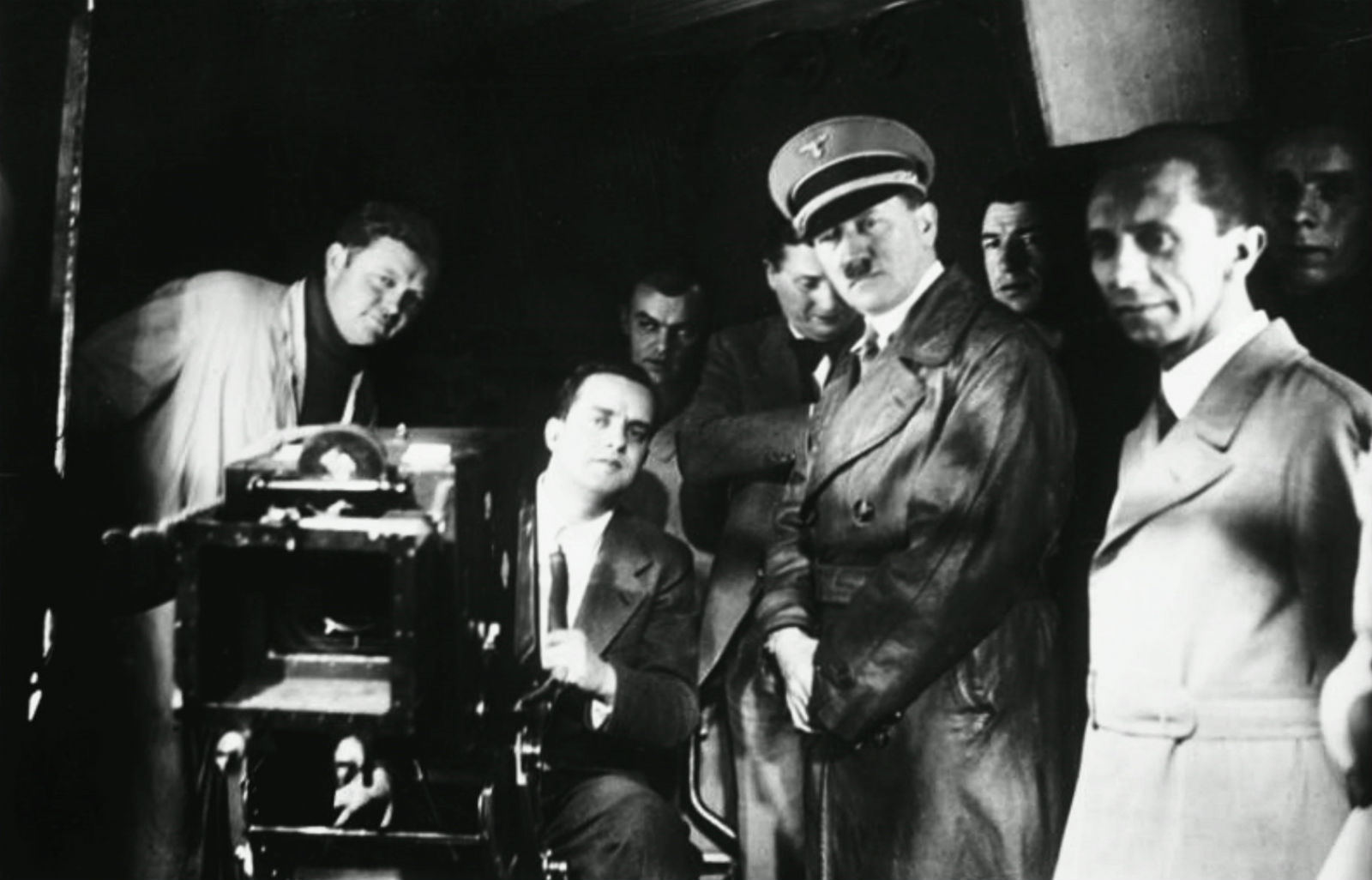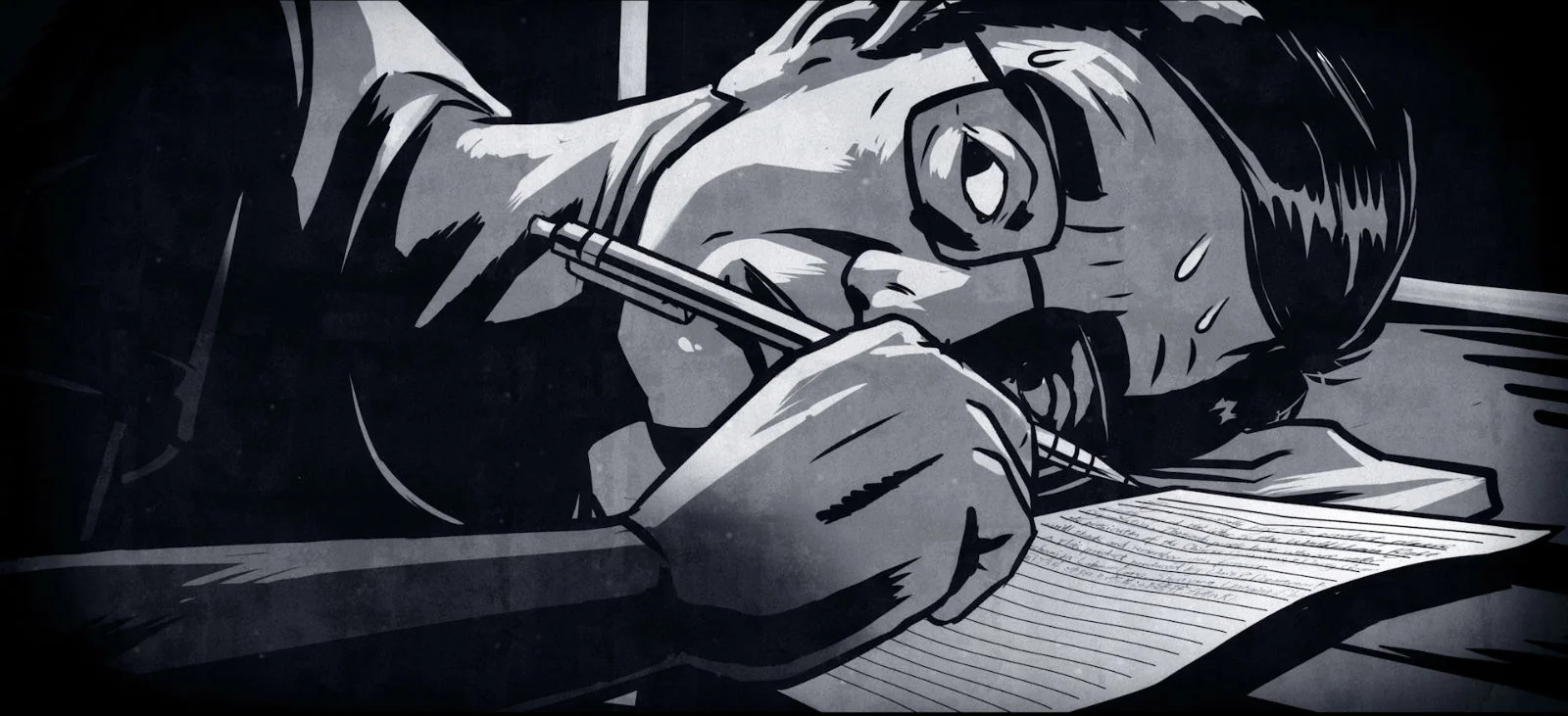Hot Docs Weekend Roundup: Nazi Film Trove Revealed, Chinese Hero Shortchanged
Hitler’s Hollywood
By Liam Lacey
Rating: B
Between 1933 and the end of the Second World War in 1945, more than 1,000 films were made in Nazi Germany, a film industry that was nationalized and controlled by propaganda minster Joseph Goebbels, though privately financed and popular in their appeal.
There were all kinds of films, a thick goop of syrup and poison: Nazi-recruiting films, sentimental melodramas, anti-Jewish propaganda, historic epics, and rather stiff musicals (swing music was outlawed). There were even screwball comedies, including a knock-off of It Happened One Night.
One missing genre: horror films, possibly because they were too close to real life.
Hitler and Goebbels on set. No popcorn blockbusters for these knuckleheads...
Written and directed by Rüdiger Suchsland, Hitler’s Hollywood is an unsettling collection of film clips with commentary, narrated by actor Udo Kier, intellectually bolstered with quotes from Siegfried Kracauer, Susan Sontag, and Hannah Arendt. His narration is like an autopsy report, pointing out evidence of the pathology with perfect hindsight.
“Every death was a happy death in Nazi cinema,” we hear. Or, that German cinema suffered from “a total lack of irony” and a “rather forced cheerfulness.” It is replete with images of bodies in choreographed motion: “Everything is in order; in lock step.”
The death obsession had an erotic component: the Swedish-born actress, Kristina Söderbaum, became mockingly known as “the Reich’s floating corpse” because of her tendency to play characters that committed sacrificial suicides, exposing “the necrophiliac core of the Nazi fantasies.”
Of course, in the 1930s, forced cheerfulness and escapism were hardly unique to Nazi films. Busby Berkeley’s musicals showed mechanized bodies as much as Triumph of the Will did, albeit for different aims. You want death-obsessed cinema? The 2014 movie Guardians of the Galaxy had more than 80,000 onscreen deaths. The contemporary actress Charlize Theron holds a record with 25 onscreen deaths but no one yet has cited her as evidence of national pathology.
There’s also a lot of overlap with mainstream movie tastes. We see a 23-year-old Ingrid Bergman in her only German film, The Four Companions (1938), four years before she starred in the anti-Nazi Casablanca. The Nazi film era also produced the Puerto Rican-set romance La Habanera (1937), directed by Detlev Sierck, later better known as a master of the American melodrama Douglas Sirk.
Hitler’s Hollywood attempts to subject a great variety of films to a single test — how did they reflect Nazi ideology? — and the examples serve the film’s purpose but apart from the blatant anti-Semitism and ideological kitsch, the era’s celebrations of collective sacrifice and violence feel entirely familiar today.
Hitler’s Hollywood. Written and directed by Rüdiger Suchsland. Narrated by Udo Kier. At Toronto’s Hot Docs Ted Rogers Cinema beginning July 20.
Letter from Masanjia.
Letter from Masanjia
By Liam Lacey
Rating: C
An urgent human rights issue and a fascinating story worthy of a Hollywood thriller are not well served in Letter from Masajia, a documentary by Chinese-born, British Columbia-based filmmaker, Leon Lee.
In 2012, an Oregon woman, Julie Keith, opened a Styrofoam Halloween tombstone she bought at K-Mart. Inside the package, Keith found an SOS letter from a Chinese political prisoner, begging for help. Her story made the papers, even as far away as China, where it was seen by the now-released letter-writer, a middle-aged engineer named Sun Yi, who had been imprisoned and tortured in the Masanjia labour camp, because he followed the outlawed Falun Gong spiritual practice.
Director Lee contacted Sun and, using Skype and the assistance of an unnamed cameraman in China, help Sun Yi to tell his story — and subsequent events after the filming began. This is a harrowing story of cruelty and perseverance but Lee's decision to render his account of imprisonment and torture in black-and-white animation produces emotional distance rather than empathy. This is one of those cases where a journalistic account (see Marsha Lederman’s April 26 story in The Globe and Mail) proves more helpful than a film.
Letter from Masanjia. Directed by Leon Lee. With Sun Yi and Julie Keith. At Toronto’s Hot Docs Ted Rogers Cinema beginning July 21.


